Fall/Winter 2024 Edition









Fall/Winter 2024 Edition








By Jeff Rice jerice @prairiemountainmedia.com
It has been two years since Colorado’s livestock industry faced the existential threat of the infamous PAUSE initiative, but if one thinks the anti-livestock folks have folded their tent and gone home, one would be sadly mistaken.
PAUSE, or Initiative 1 had it appeared on the 2022 election ballot, would have criminalized many widely accepted animal husbandry practices necessary for successful livestock production, on the pretense of ending cruelty and suffering in the livestock industry.
The initiative was deflected by a Colorado Supreme Court decision that said there were too many diverse ideas in one initiative to meet statutory requirements for titles The activists behind PAUSE have been equally unsuccessful getting similar initiatives on the Oregon ballot, mostly because they can never get enough signatures to qualify the measure
Lest anyone believe Coloradans and Oregonians are in favor of “animal cruelty,” both states have stringent regulations about livestock handling, and the Colorado Department of Agriculture has an entire office devoted to humane treatment

of livestock.
And the intentions of those promoting the initiatives aren’t exactly what they seem, either. Alexander Sage and Brent Johannes filed the initiative on Feb. 2, 2021 Sage is a notorious “animal rights” activist who has formed PRO-Animal Future, an organization that explicitly states that its purpose is “end-

In memory of Chad Lauer
ing animal farming through political action.”
Which brings us to the 2024 election and a ballot initiative in Denver to outlaw slaughterhouses and ban the use of natural animal fur. Sage promotes the initiative and PRO-Animal Future on his Facebook page and makes it clear he’s in this for the long term.
To get a better perspective from the livestock side of the issue, the Journal-Advocate sat down recently with Erin Spaur, executive director of Colorado Cattlemen’s Association, to talk about this threat to Colorado’s $4.8 billion livestock industry The interview has been edited for clarity
River Station provides afriendlyand clean environment along with great customer service.Theyoffer Hunt Brothers Pizza, Lauer Krauts,a wide variety of cold drinks,fountain drinks and coffee. Theyalso haveagreat selection of a wide variety of snacks.
River Station Customers arewhat maketheir businessrun.Theyappreciatethem very much and areverythankful forall of them over the years.

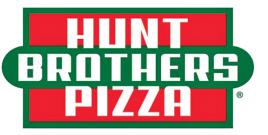

FROM PAGE 5
JOURNAL-ADVOCATE >> Why do you think this is happening now, in Colorado?
ERIN SPAUER >> I think it’s the ease at which they can get and manipulate things through the ballot system. And I think that’s what makes it a prime target for these activist organizations. We have some information that they’re targeting these all across the West because they haven’t been successful at the legislature And it’s across the West, but they know they can kind of manipulate the messaging, and have success in the ballot measures also targeting like we see in Denver, targeting cities and county ordinances as well, and then kind of gaining momentum to take them statewide.
J-A >> So do you see, specifically the Denver question, do you see that as sort of the camel’s nose under the tent?
SPAUR >> Yeah, yeah. And I think, you know, we are expecting, and this is why we’re making such a big deal about it, not just the ag indus-

try in Colorado, but it’s getting national attention. And there’s been, you know, we can all band together and fight one initiative or maybe we wake up in 2026 and are fighting and have to spread our resources across, you know, 13 different measures across the nation. Their goal is to take these issues up nationwide.
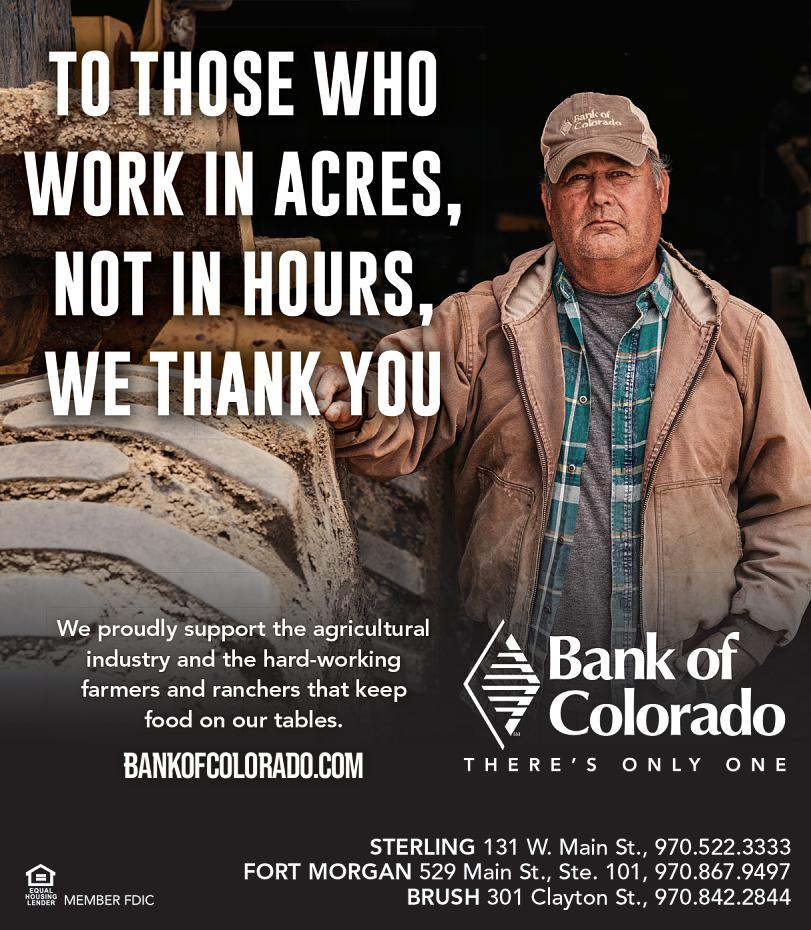
J-A >> What do you see as their ultimate goal?
SPAUR>> That’s a good question, but I think it’s ultimately just to end animal agriculture. We have some interesting interviews that we’ve kind of listened to that they’ve done The proponents have done podcast interviews and such and they’re pretty open about what
their goal is. And they specifically say this isn’t about Denver This is about moving towards a future away from animal agriculture It’s not only about slaughterhouses, it’s not only about meat, it’s also factory farms, environmental justice, everything like that. And I think that’s the real fear (that) once they gain momentum, I don’t know that they’ll stop until they put everyone out of business.
J-A >> Do you see a sort of a monolithic organization going after this? Or is this something that you swat one down and there’s another one that crops up?
SPAUR >> Yeah, it seems like there’s multiple funding streams. I feel like it all comes from one central organization and we haven’t been able to pin down where that central organization is. But I feel like if we swat this one down, another one pops up. And I think we don’t have a clear picture of who all is funding, specifically PRO-Animal Future either. And there was a complaint, campaign finance complaint filed (recently) I think, because they’re not following campaign finance laws and you can’t trace
LIVESTOCK >> PAGE 10

















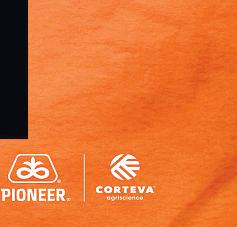

Homesteaded in 1909, the farm was honored at Centennial Farms ceremony in 2024
By Jeff Rice jerice @prairiemountainmedia.com
It is an origin story told hundreds of times in northeast Colorado, of farmers migrating to greener fields in Oregon, California, Washington and Idaho, but who put down roots here in a land they meant to just be passing through
In the fall of 1909, Harry Green, a farmer from Angola, Indiana, had a plan He was engaged to marry Mae Park, and she was agreeable to the plan; they would temporarily relocate to Idaho, build a nest egg there, then return to Indiana and buy their own farm.
Like so many well-laid plans, Harry and Mae’s plan fell apart about halfway between Indiana and Idaho. Harry had gone ahead to find land in Idaho and would send for Mae once he was settled. Instead, he got off of the train in Sterling, Colo., to visit a friend living here.
He never got back on that train.
No one knows why Harry Green decided to homestead 160 acres of windswept prairie just northwest of Padroni, but he did, and then he built a 300-square-foot, two-room
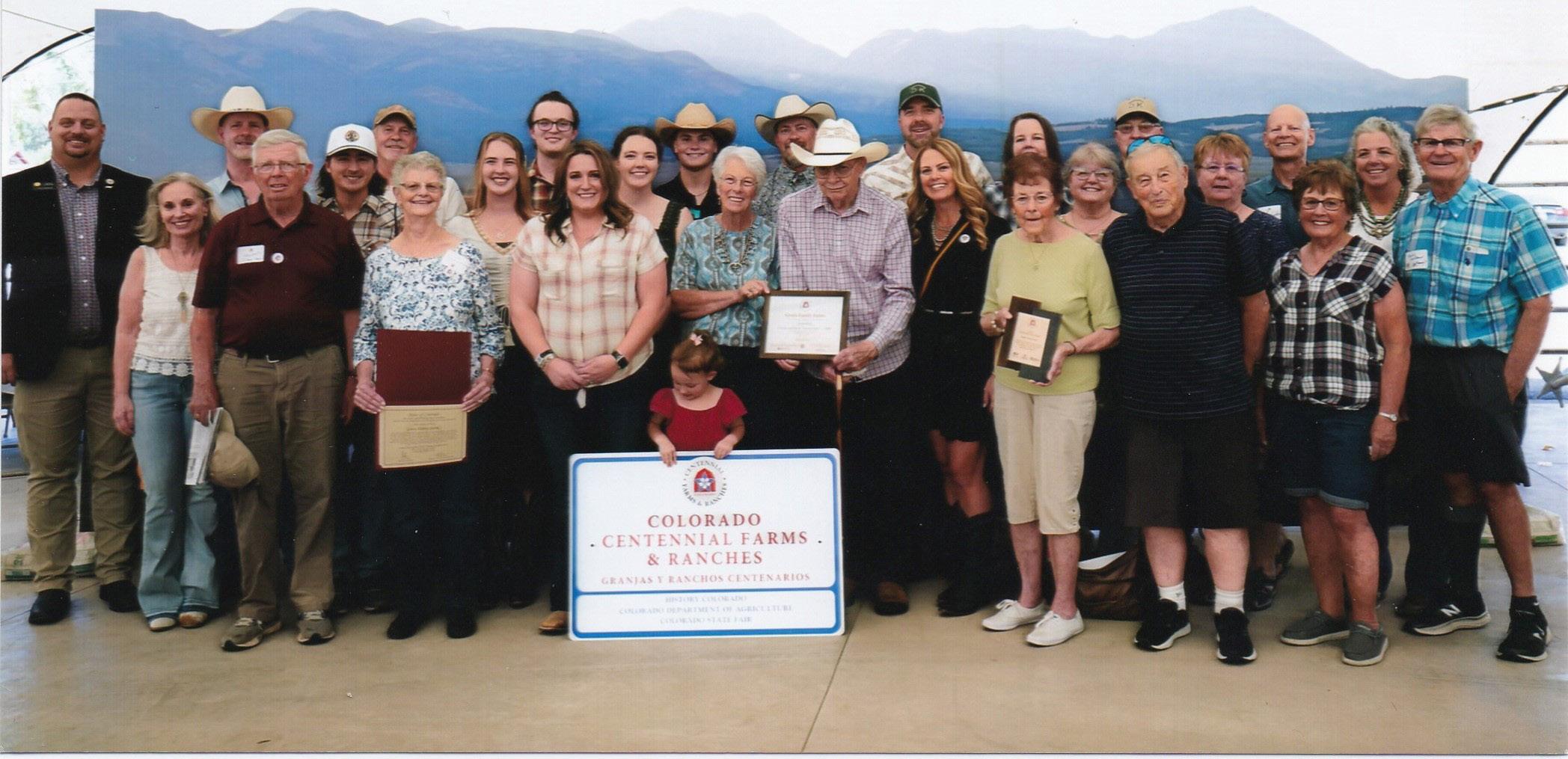
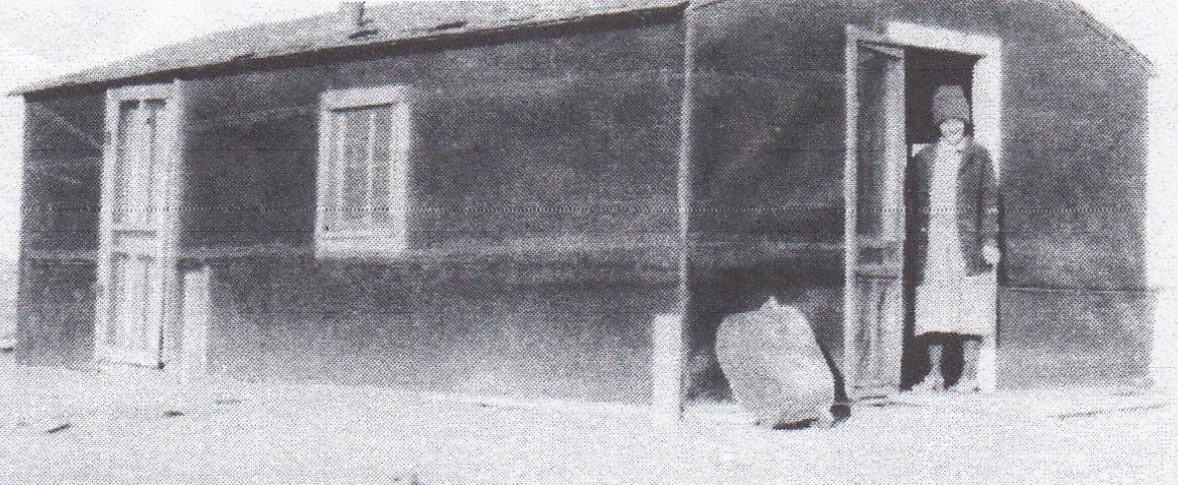
tarpaper hut on it and sent for Mae.
Mae’s baggage was dropped off at the village of Winston, about


halfway between Peetz and Padroni on the Chicago, Burlington & Quincy line, and she continued to Sterling Mae and Harry were married Dec. 30, 1909, in the Methodist parsonage, spent a couple of days in Sterling and then headed out to the farm, such as it was.
It is a measure of the grit and strength of those pioneers that they stayed and worked a land that was sometimes downright hostile. Harry and Mae’s daughter, Ruth Green Hoffman, would later write in the Logan County History of Families of the bleak scene that greeted Mae at her new home.
“There were no fences or trees, just cow trails,” she wrote. “No well for water. Dad carried two buckets from the neighbors for one mile. Sometimes when the wind was
blowing he would arrive home with about one bucket in all.”
For meat, there were jackrabbits; otherwise, there were pinto beans. Beef and vegetables would come later, as would a larger house, garden, water well and, of course, children. And earlier this year, the State of Colorado designated the Green Family Farm as a Centennial Farm, a farm or ranch continuously owned and worked by the same family for more than 100 years.
Harry’s son Tom would later take over the farm, and then his son, Charles, known to everyone as Chuck, would take it over. Chuck remembers his father, Tom, using horses to pull the cultivator through the fields and to mow hay.
“We had a seven-foot mower then,” Chuck said. “Now they’re 32 feet.”
They planted corn using an old-fashioned corn lister, and had to go back and cover the seed rows by hand.
The family purchased its first tractor in 1949 and upgraded thereafter. And, like most farm kids, youngsters in the family spent many hours riding with grandpa and dad in tractor cabs until they were big enough to drive them.
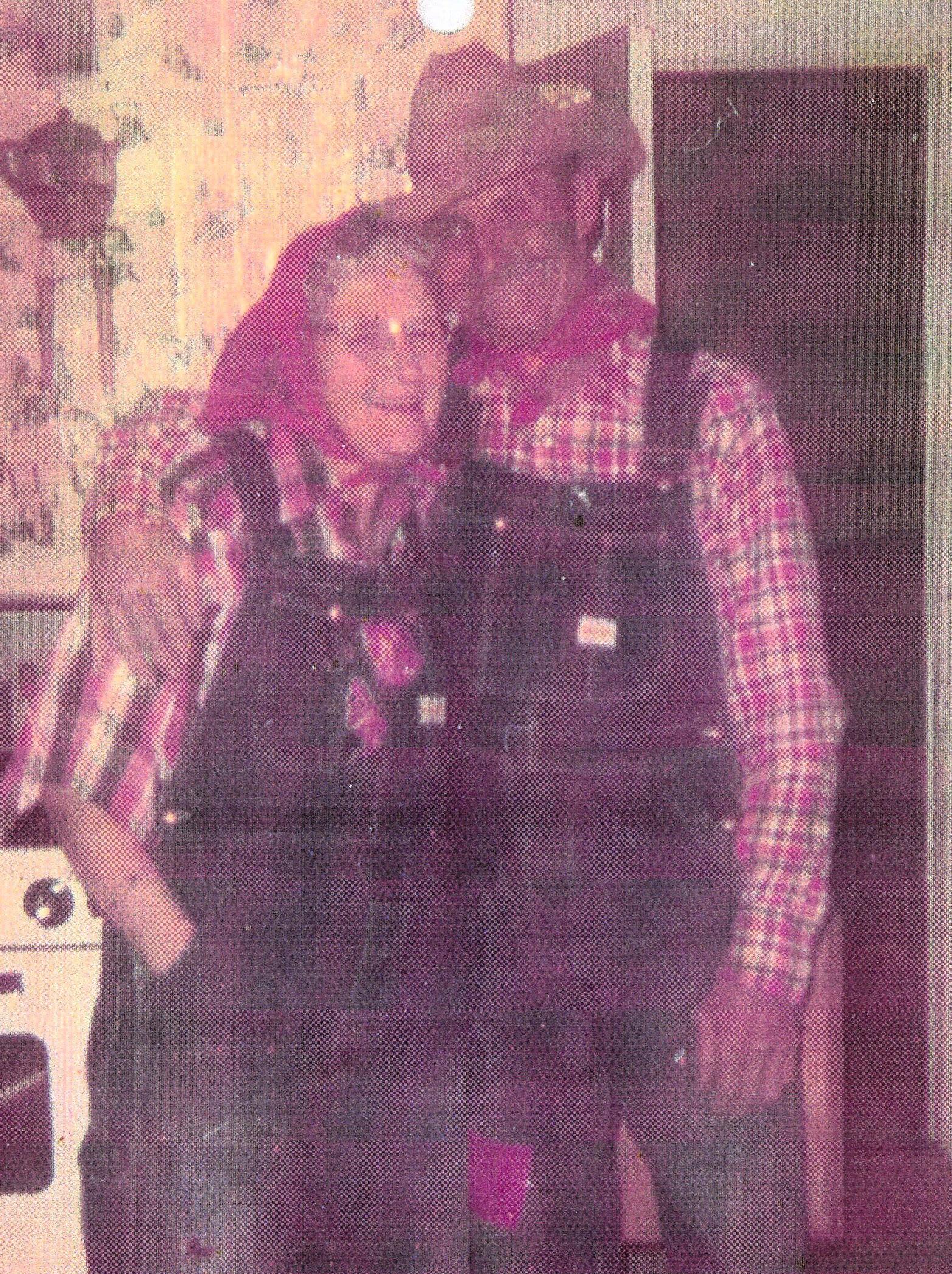
As is common among farm families, Chuck never intended to be a farmer. After graduating from Padroni High School in 1965 he attended Northeastern Junior College where he met Kathy Schaus, a banker’s daughter from Evergreen, Colo After they were married, they moved to Fort Collins where Chuck earned a bachelor’s degree in agriculture while Kathy worked.
“He got his BS and I got my PHT,” Kathy joked. “Put Him Through.”
With Chuck’s newly-minted diploma, the couple moved to the Cortez area, in 1971 where Chuck taught at the San Juan Basin Area Vocational Technical School in Mancos.
Within three years they were
back on the farm near Padroni to help Chuck’s father, Tom, run the farm. Off-farm income was as important then as it is now to most farms in the area. Harry Green had been a blacksmith and did work in Sterling and Proctor and, during the drought years, at the farm. Chuck drove the Sterling High School activities bus for 30 years and Kathy worked as the receptionist at McDonald & Keil at the same time.
In those first years, Chuck and Kathy increased the profitability of the operation by selling grassfed beef directly to consumers. They had met a family whose child couldn’t eat corn-fed beef.
“Since we didn’t finish our calves in a feedlot and we processed them younger than most, they were 100 percent grass-fed,” Kathy said “We discovered that the child could di-
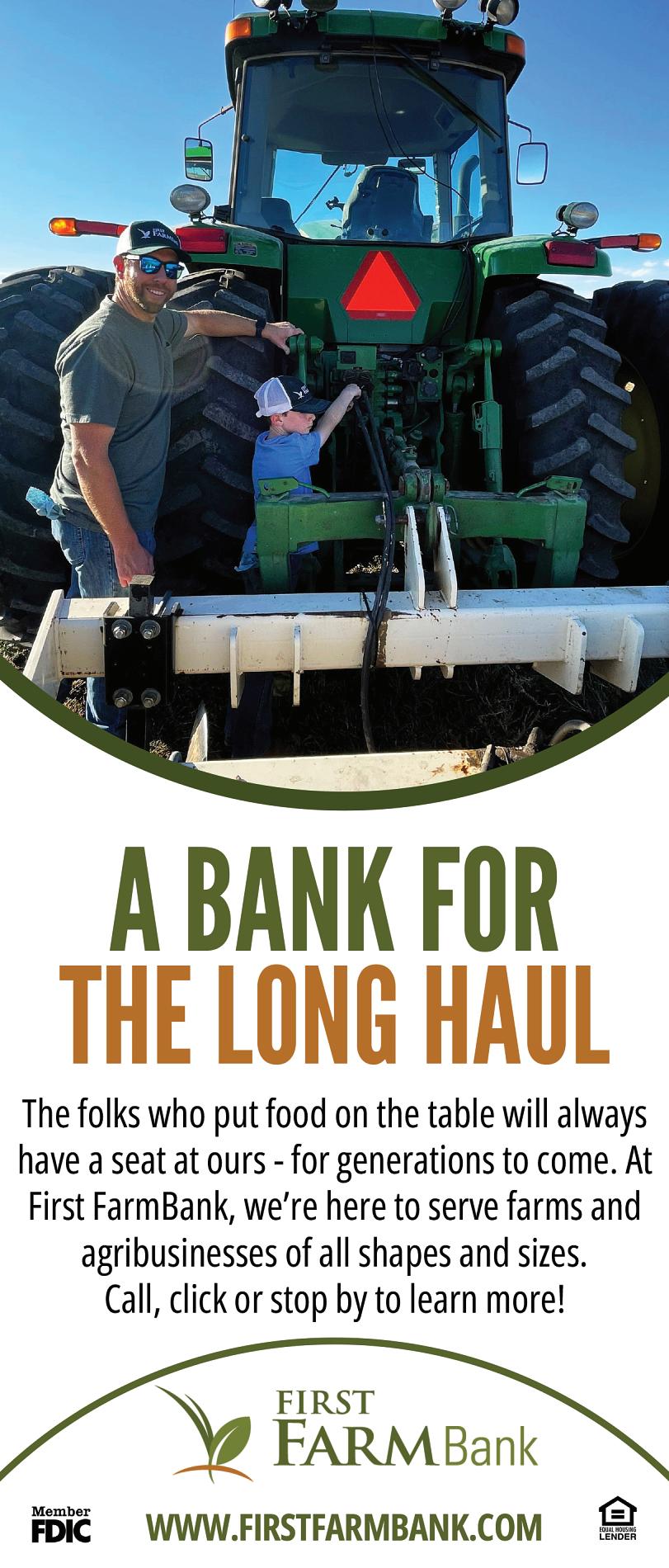

Kathy and Chuck’s sons Brian, in the front, and Justin harvesting wheat on umbrella-shaded combines.
they do intend for it to stay in the family. The farm is in a trust that Chuck and Kathy’s sons, Brian and Justin, and daughter, Dana, own jointly.
FROM PAGE 6
who’s donating, it’s just PRO-Animal Future donating to PRO-Animal Denver and just having donations coming in at $25,000 a piece, and you can’t really track those donors.
Another thing that comes to mind is not only these ballot measures that we’re fighting — and I don’t know how you specifically word this (so it’s) politically correct — but I think they’ve also been welcomed into the state with open arms from the (Polis) administration, too And I would say that they potentially have ties to the First Gentleman as well, and so that may be why this is a great place to kind of test those ballot measures because they have that platform in the administration.
our hope. And that it seems like there’s a real focus on animal issues and animal, whether it be agriculture or wildlife issues or anything like that, that is, it’s kind of being spurred by that by the First Gentleman. And our hope is, you know, if another administration comes in, hopefully we won’t have the target on our back and we won’t be the focus. They’ll be focusing on the real issues in our state. And that’s our hope, is to get someone in the administration, no matter what party it is, we are a nonpartisan organization, but one that understands the value of agriculture, understands the value of, you know, what agriculture does for wildlife issues, and would bolster us up rather than trying to destroy us.
J-A>> What is Colorado Cattlemen’s Association’s strategy for fighting this?
gest our beef. So we were doing the ‘pasture-to-plate’ thing long before it became popular.”
Although none of the Greens’ children plan to work the farm,
“They are fourth-generation owners,” Kathy said. “They rent it out but still own it and I expect it will remain like that for a long time.”

J-A >> Do you think then that with a change in administration in two years, some of this might die down?
SPAUR >> That’s our hope That’s
SPAUR >> Continuing to advocate for our members and the industry, put pressure on the administration, and look at long-term strategies to protect our industry.
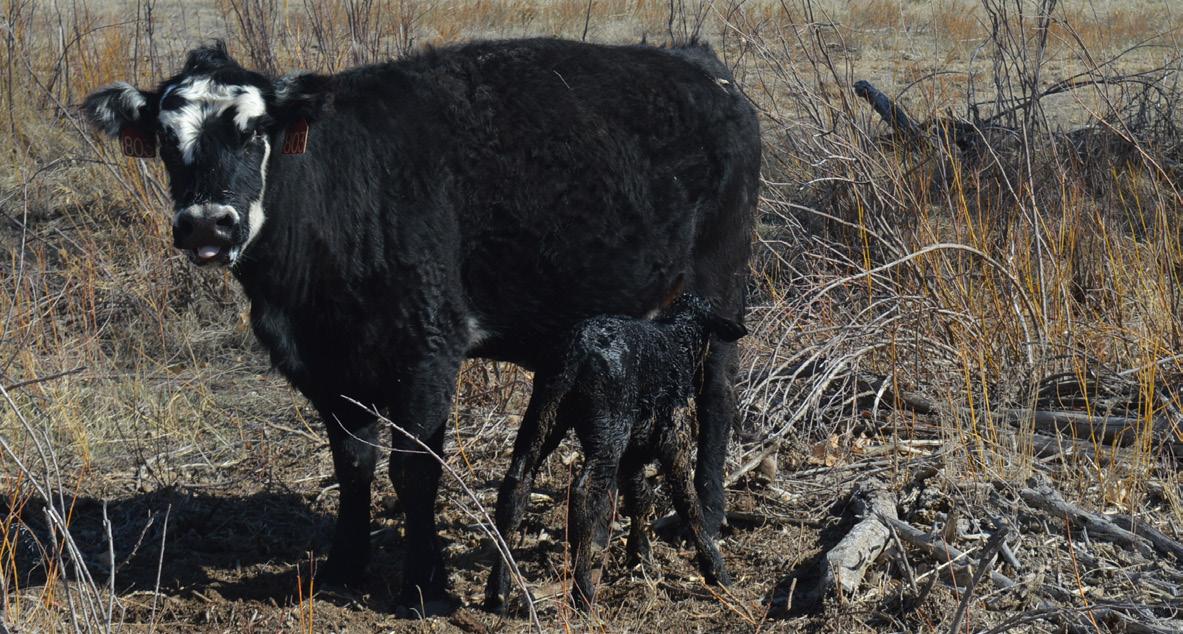



By Robin Northrup
The Fort Morgan Times
When you think of Pope Farms in Wiggins, you may picture the corn maze or the giant slide made from straw bales.
None of this would be possible without the variety of crops grown on the farm, such as corn, pumpkins, and other produce. Shannon Beauprez, her brother Derek Pope, and his wife Cynthia work together to bring the farm to life after farming the land.
The family grows a wide range of produce including corn, squash, chilis, pie and decorative pumpkins, gourds, watermelon, cantaloupe, straw, sunflowers, and farm flowers.
“My brother Derek is the one who farms the land, and we sell everything we grow,” said Beauprez “We take produce to farmers markets and sell some wholesale. Corn is sold to dairy farms and other businesses or taken off the cob and processed. My mother has a store in Greeley, and a lot of it goes to her. We even roast chilis and sell them here.”
In the fall, the family shifts from farming to agritourism, turning the farm into a destination with seasonal activities for the whole family. Many families visit for
photo opportunities while spending the day on the farm. This year, from Sept. 28 to Oct 27, the farm opened its doors on Fridays, Saturdays, and Sundays. It attracted visitors from all over to enjoy pumpkin picking, hayrides, a super-sized slide made from straw bales, and even a zipline for the kids. One of the main attractions is their 10acre corn maze.
As you walk around the farm, you will also find a giant bounce pillow, corn bin, barrel train, several games, and bubbles. There is no need to worry about food during the day; the entrance to the farm is filled with food and beverages, along with snacks, goodies, and homemade items. You can even pick up a souvenir or some fresh fruit and vegetables to take home, depending on the season.
You can choose from the 40 varieties of pumpkins in the 30-acre pumpkin patch to find the perfect one. Choose from orange, yellow, pink, green, and red pumpkins in all shapes and sizes. You may even want to pick some flowers to take home on your way out of the patch.
During the week, Beauprez says many schools and organizations visit Pope Farms for field trips. “Kids come out to walk around and take part in all the fun activities,

By Robin Northrup
The Fort Morgan Times
Amy Troudt recently opened The Vintage Garden Boutique, a new flower shop in Wiggins featuring items from her family’s farm and local artisans.
Amy’s husband Nolan and his brothers Nathan and Norman manage their 500-acre farm in Wiggins, which their parents owned. The brothers have continued to operate the farm while balancing their full-time jobs.
“It’s really in their blood,” Amy said “Farming is hard work but very rewarding for them.”
Nolan and Amy’s grown children help with both the farm and the shop. Nolan’s sons, Levi, Luke, Tyler, and Amy’s daughters, Megan and Ashley (who live in Kansas and Nebraska), are often home on weekends with Amy’s grandson to help with the farm and the flower shop. Amy says the boys always help her with the moving and lifting, and when her daughters aren’t home, they always send her photos and ideas for the shop while the boys help move and lift.
“The kids run the combine, repair the tractors and other equipment, and can handle heavy lifting for the shop,” she said. “The guys are great about being the muscle for my ideas Hauling hay bales and cutting corn stalks is harder than you might think.”
The farm primarily grows corn and alfalfa to feed its cattle. Wheat is sold to the grain elevator in Roggen, leaving a small area for pumpkins, sunflowers, and gourds for the flower shop. The farm also provides straw bales and corn shocks for the store’s decor — everything is for sale.
Rachel Gabel from Weldona was brought in to decorate the front of the store. Gabel owns a flower farm and is the agriculture writer and assistant editor of The Fence Post Magazine. Using items from the Troudt farm, Gabel shaped a 16-

Amy Troudt and her husband, Nolan. The couple combine family and farming with their new flower shop, The Vintage Garden Boutique, in Wiggins.
foot cattle panel into an archway in two stock tanks She brought in willow from her farm and wove it through the panel with milo, creating an eye-catching storefront that can be decorated for the different seasons.
Inside the store, old tin covers the fronts of her counters. Amy said that you can spot many items used in the remodeling of her store from the farm “junk pile.”
“That is one thing that amazes me; I have uncovered some treasures in that pile,” Amy said. “Their junk pile is full of tin, barnwood and other things used to decorate the store.”
The flower shop has a cozy atmosphere. The glass doors to the cooler showcase fresh flower arrangements with flowers from Gables Flower Farm added in. Amy creates arrangements and home decor using dried flowers and other natural goods that are on display. Candles and other creations are brought in from local artisans, along with vintage items that Amy has collected over the years for just
BOUTIQUE » PAGE 13

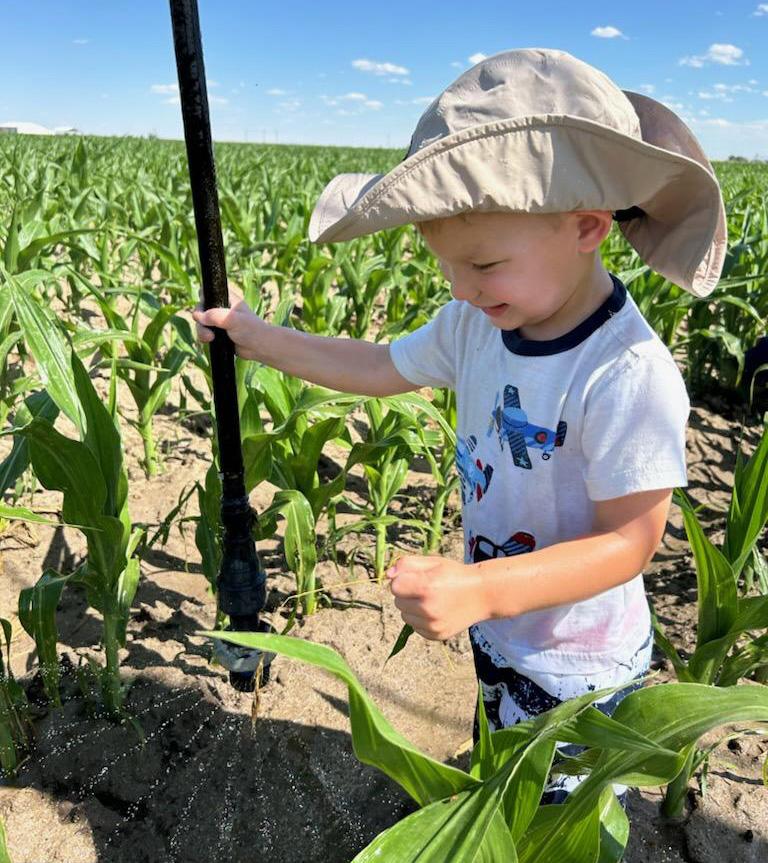
FROM PAGE 12
this purpose.
One of Amy’s most treasured items on display is a cowboy boot filled with flowers — a gift from her mother on the day of her grand opening. The boot has been so popular with customers that Amy creates arrangements inspired by the one her mother made for her using various styles of boots and flowers.
The family has found a way of incorporating agriculture into their flower shop by drawing on their family roots and using resources from their farm, bringing The Vintage Garden Boutique to life
The Vintage Garden Boutique at 400 Central Ave in Wiggins is open from 10 a.m. to 4 p.m., Tuesday through Saturday Follow them on Facebook at The Vintage Garden Boutique.


You can choose from the 40varieties of pumpkins in the 30-acre pumpkin patch to find the perfect one. Choose from orange, yellow, pink, green, and red pumpkins in all shapes and sizes. You may even want to pick some flowers to take home on your way out of the patch at Pope Farms in Wiggins.
FROM PAGE 11
including picking a pumpkin.” Pope Farms is a cornerstone in the Wiggins community, con-
tinuing traditional farming with modern agritourism. Pope Farms is located at 19502 County Road 3 in Wiggins Visit their website at https://www.popefarmscornmaize.com/ or their Facebook page at https://www.facebook. com/popefarmscornmaize.


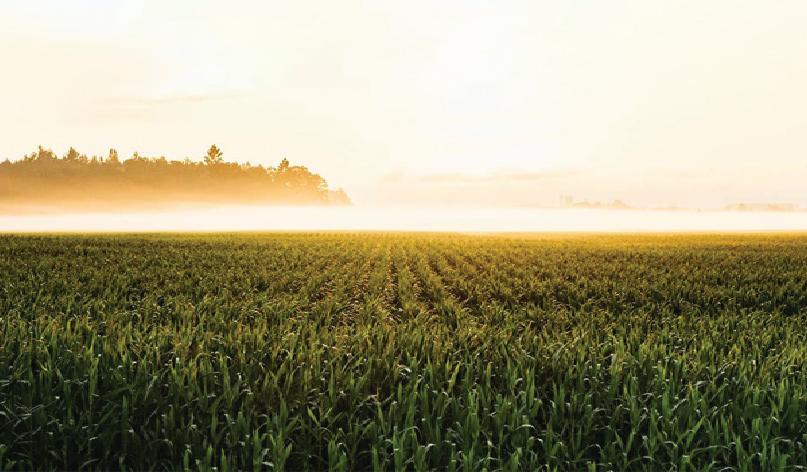


By Callie Jones cjones
@prairiemountainmedia.com
With a new school year underway Caliche High School’s agriculture education classes and FFA chapter are keeping busy with exciting things underway.
According to Mike Forster, who took over as ag teacher and FFA advisor this year, approximately 40 ninth-12th grade students are currently enrolled in ag education classes, as well as 12 eighth and 11 seventh graders
“Wonderful group of kids, so many of them that are on fire for agriculture and for the FFA. I look forward to just pouring into them and teaching them to be a better them and be an advocate for agriculture in the future,” he said via video during a recent RE-1 Valley School Board meeting.
One of his favorite units to teach is Range Management. Sophomore students have spent time evaluating range sites at Caliche and determining what the range and ecological site is, the grass species growing in that site and proper management techniques for that. They also attended the state Range Management Contest, in Yuma, on Oct. 9, where they had to walk through sites and determine what they were, as well as identify 40 of the 63 range plants not only by name but whether they were an increaser, decreaser, or invader.
“It’s quite an extensive contest,

but as I tell them the largest agriculture production ground is still



FROM PAGE 14
pastures and range land so I think it’s really important that we get them out there and having that experience,” Forster said.
Additionally, the ag mechanics class has some major changes going on in the shop “and we’re fortunate enough to have some juniors and seniors that are just on fire to make those changes,” he said.
They are working to turn the area into a more useful space and are learning how to be frugal and to repurpose many of the classroom’s old benches that have been attached to the wall into workable tables to accommodate various things.
The biggest project underway is updating welding booths to allow more students to use them and make them safer.
Forster told the board he will be coming to them in the future with some bigger purchase requests that he believes can set students across the district up to be very successful. He mentioned the current shortage
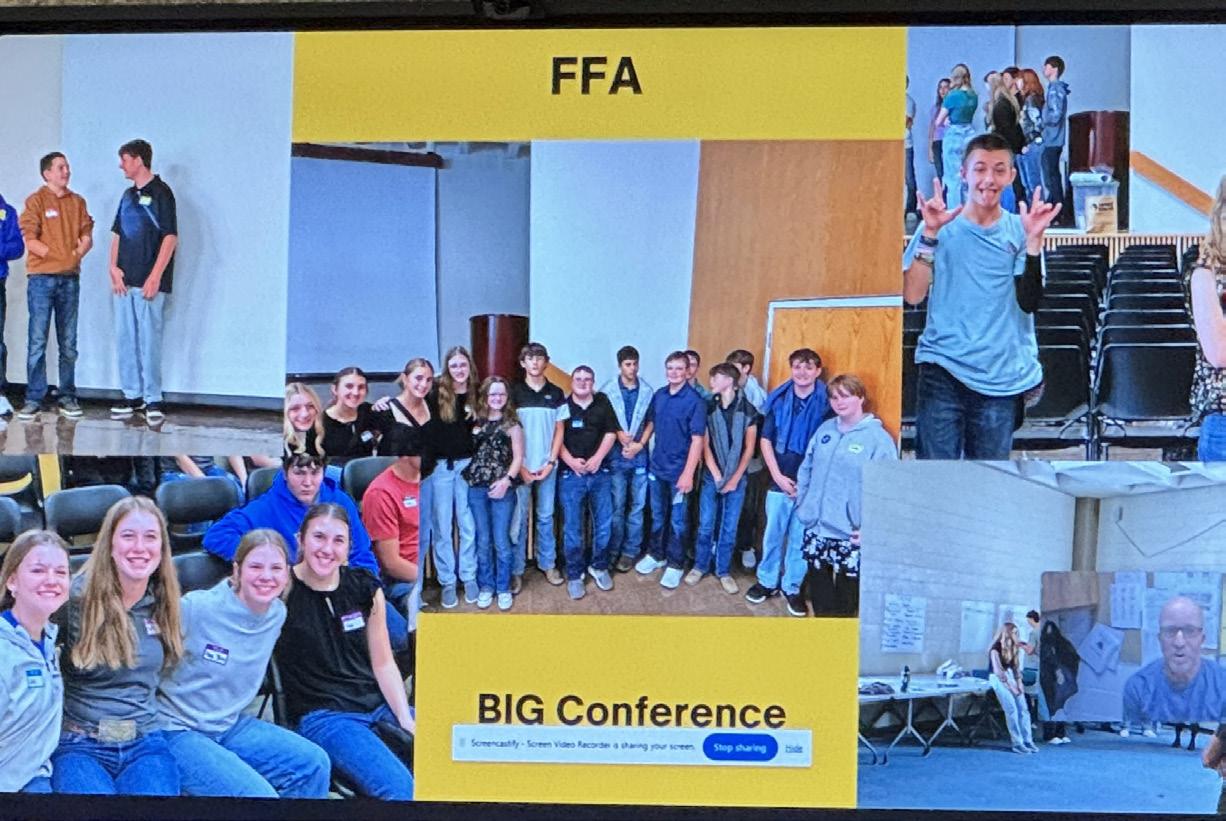
Caliche High School freshmen FFA members attended the 2024Being Involved as a Greenhand Conference in September.
of workers in the industrial arts field including carpenters, plumbers, electricians, etc., and said, “Ag education and industrial arts and so many of the other CTE (Career and Technical Education) programs, they are that gateway to get our students out there.”
The ag education program was
able to receive a $12,000 Welding Innovation grant through BOCES, which allowed them the purchase a Porta-Fab 45 welding machine, welding equipment such as helmets, gloves, etc., fabrication tools including clamps, magnets, etc and a fit-up table.
For the final portion of the grant,
Forster will be taking a group of students to Northeastern Junior College to talk to welding instructor Jason Hill and tour the new welding shop
When not in the classroom, FFA students have been busy working on SAE (Supervised Agricultural Experience) projects. The freshmen also attended the Being Involved as a Greenhand Conference at NJC in September and six students just returned from the National FFA Convention, in Indianapolis.
“What I love about FFA is our students are able to network with students not only from across Northeastern Colorado but across the state and across the nation,” Forster said.
Additionally, “one of the best activities we’ve been able to be a part of this year so far,” he said, was a community service activity in Iliff. Twelve members and some mini-members spent several hours helping clean up some lots and helping the Town of Ilfif with some work it has been doing
“We’re just trying to give back to our community and we look forward to having some more of those,” Forster said.

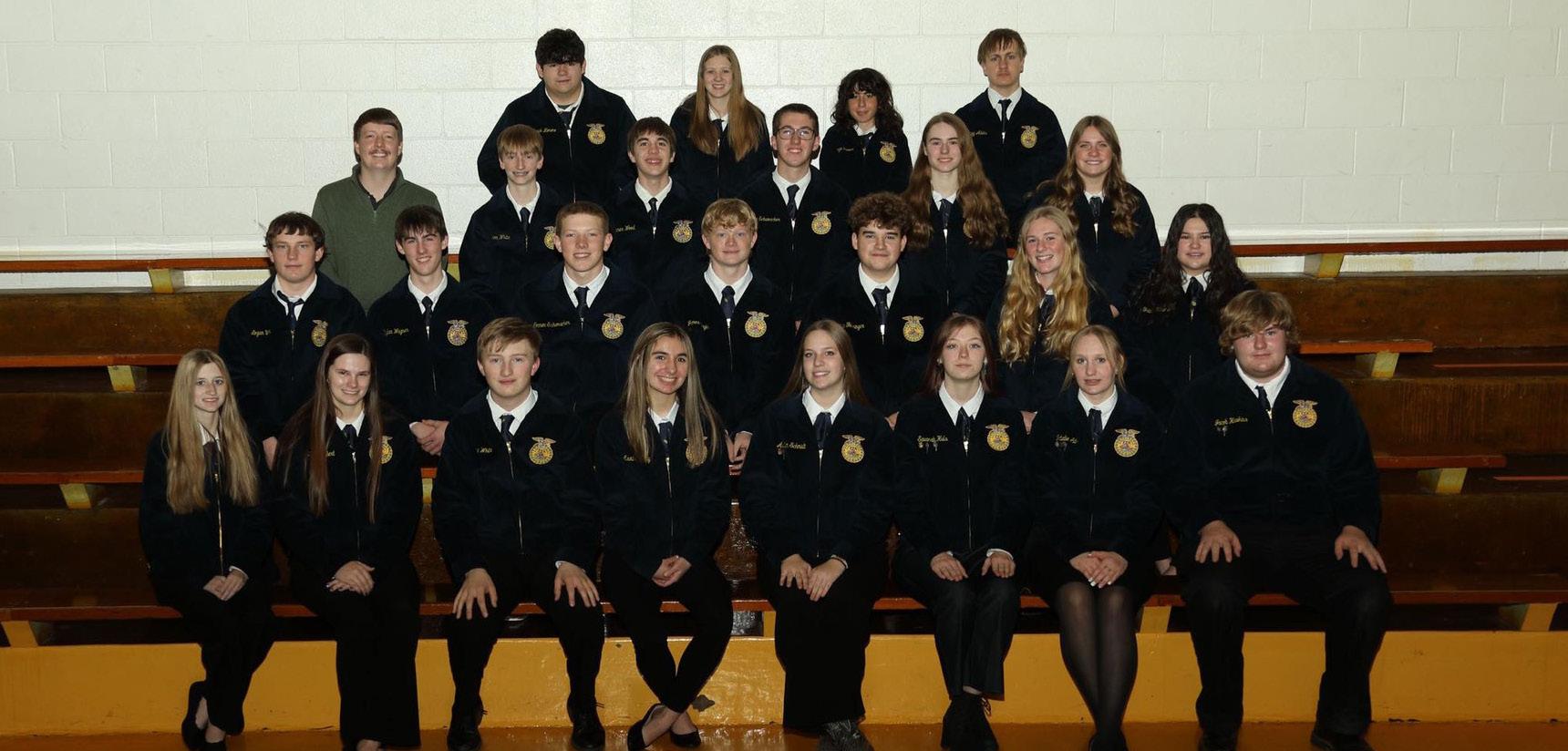



Peetz High School FFA chapter kicked off the school year with four members traveling to New Raymer to compete in the Regional Range Judging competition, which consisted of them identifying range plants native to Colorado, evaluating two range sites and calculating stocking rates for each site.
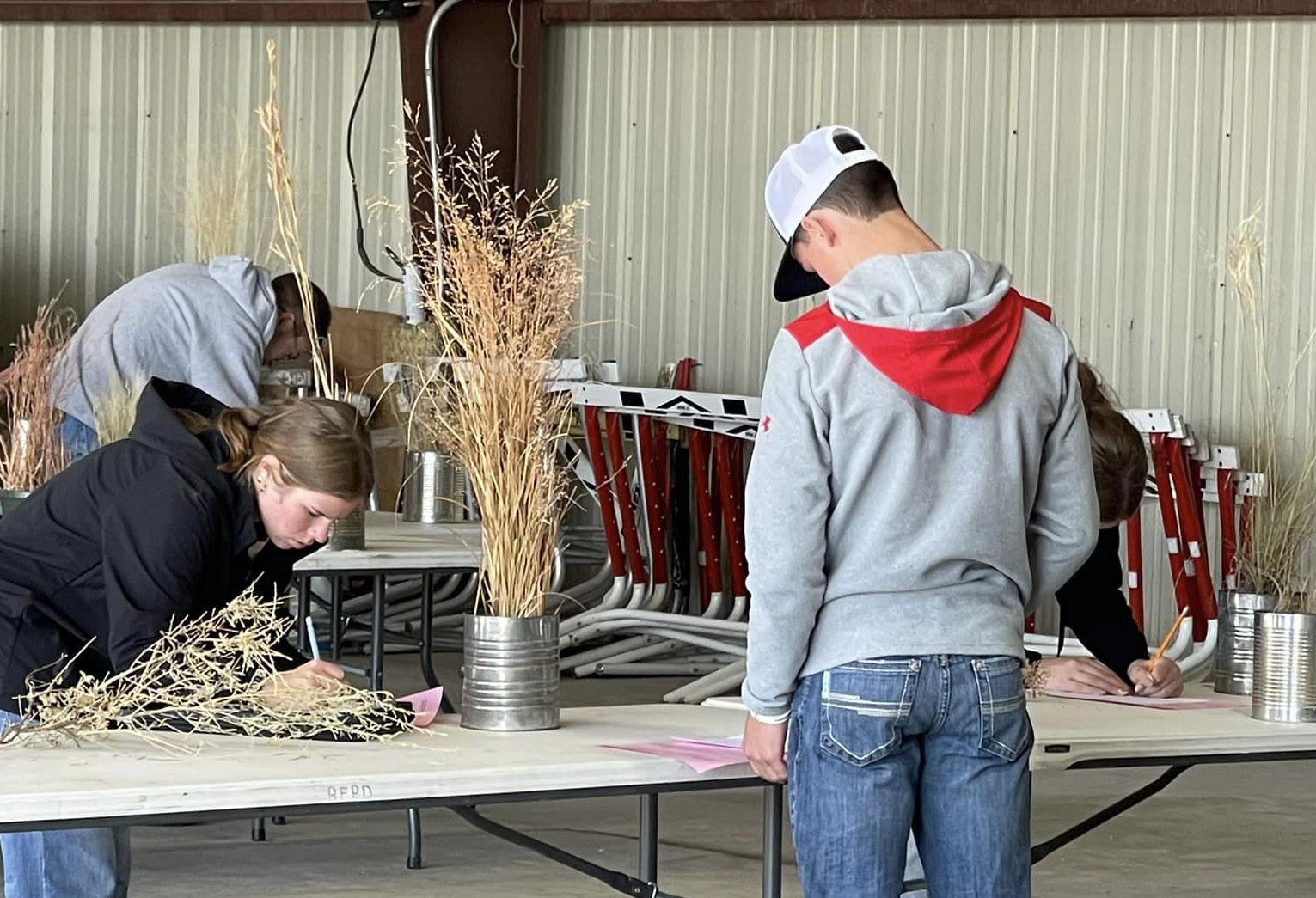


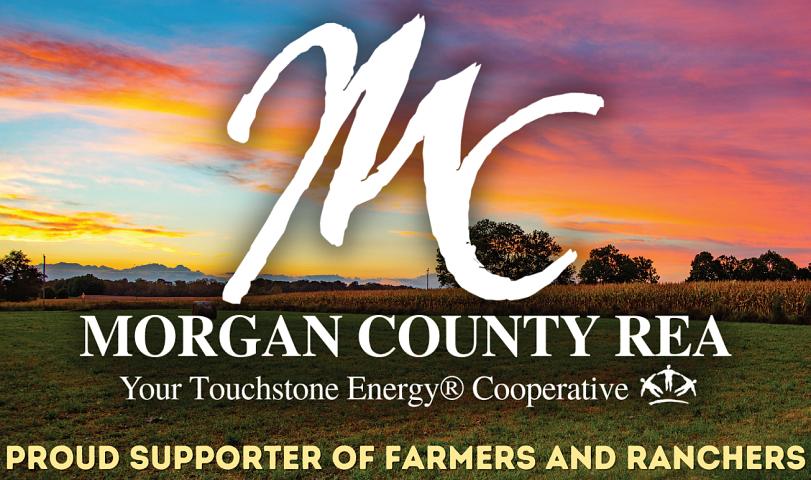
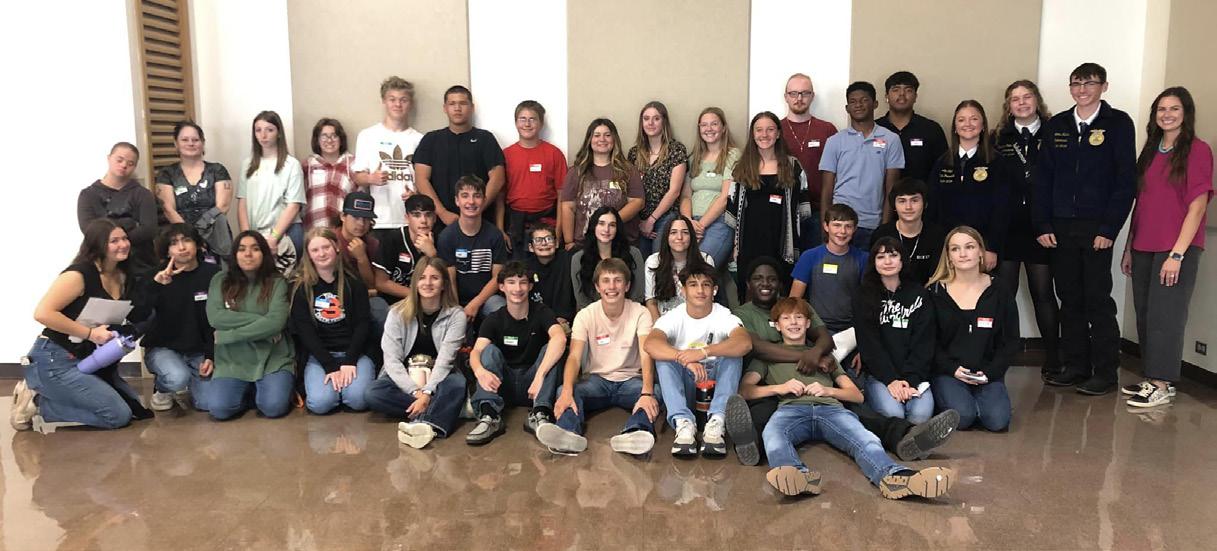
Sterling FFA members at the BIG (Being Involved as a Greenhand) Conference held at Northeastern Junior College on Sept. 26.
By Callie Jones cjones
@prairiemountainmedia.com
The Sterling High School FFA chapter has enjoyed a busy start to the school year.
In August, the chapter held a Back to School BBQ in the ag shop with burgers and hot dogs and games such as nine square and cornhole.
“It’s just a great way to get the FFA year started with members and families,” said Kali Graber, chapter reporter “It’s a great way to get the new freshmen involved and we also introduced our new
officer team to all of the families and it’s a great way to interact with parents to get them in the know of what’s in the upcoming year.”
The first chapter meeting was held in early September. Dakota Fickes, chapter treasurer, said the members played dodgeball, made some snacks and talked about upcoming events and plans for the year For the October chapter meeting, the students visited the Baseggio Pumpkin Patch and Corn Maze.
Also in September, the chapter was at Sugar Beet Days selling cotton candy and members participated in the Regional Range Judg-
STERLING » PAGE 18
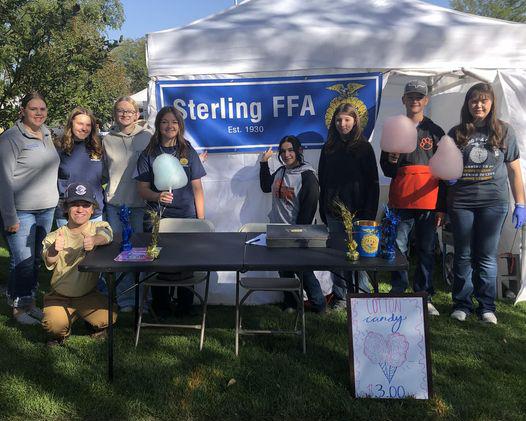




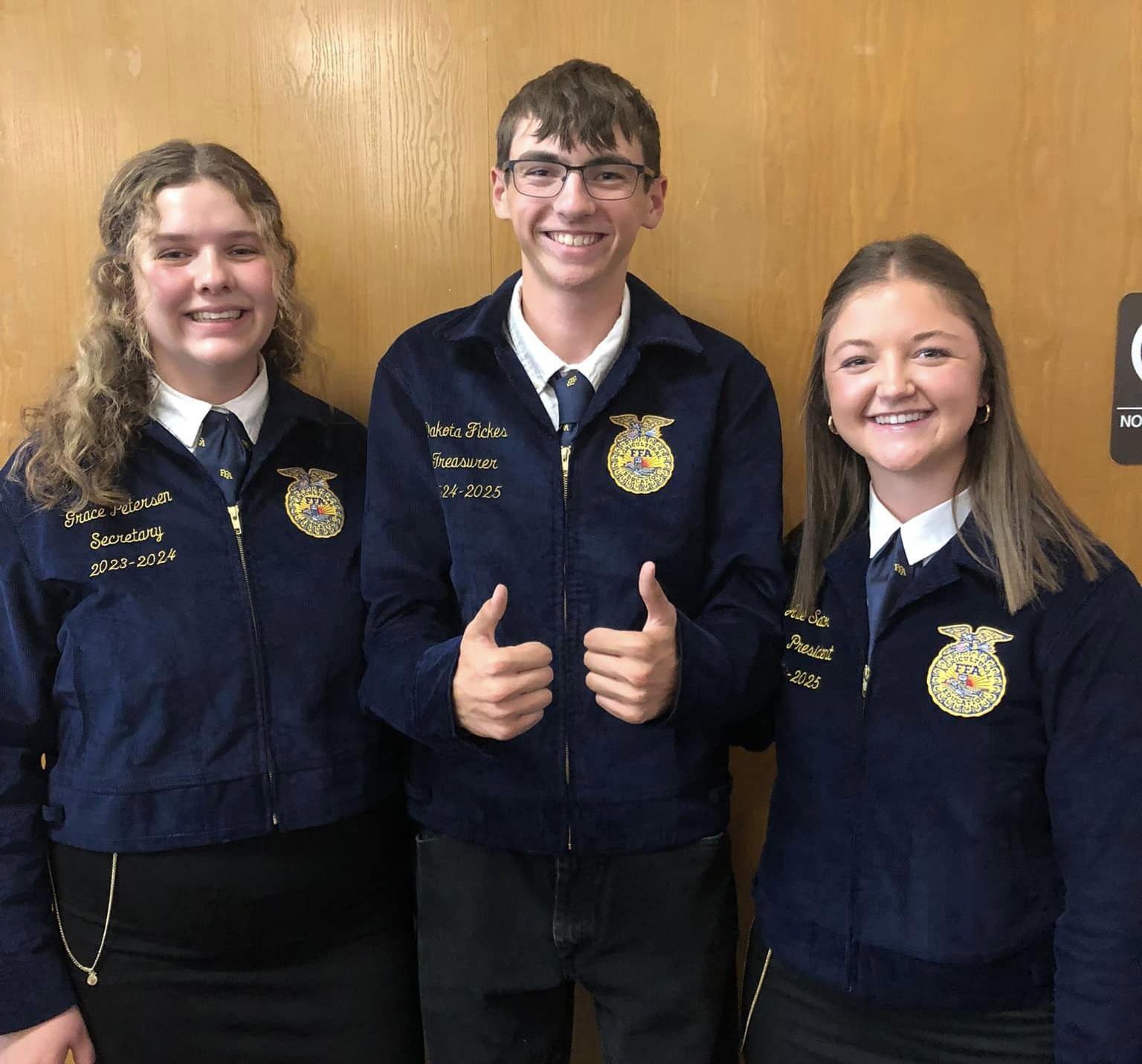
Sterling FFA member Alie Sator, right, was elected 2024-25district vice president, and Grace Petersen was elected executive committee member. With them is Dakota Fickes, who served on the district officer nominating committee.
showed the new FFA members the ins and outs of the organization.
FROM PAGE 17
ing Contest, “which our team did pretty good at and we learned a lot of new things and it was super fun,” Fickes said. The team placed sixth out of 14 and had some individual placings too, with a handful of students competing in the state contest in October. Individual placers included Gold — Alie Sator, Silver — Anthony Huey and Caylee Lauer and Bronze — Kali Graber, Sully Fernandez and Dakota Fickes.
Before the contest, rangeland students spent a day in New Raymer with NRCS (Natural Resources Conservation Service) Rangeland Specialist Ben Berlinger, who helped them better understand the contest and a morning with Ben Davis of NRCS’s Fort Morgan’s office, learning about his job and the jobs of several guests he brought with him
Closing out the month was the BIG (Being Involved as a Greenhand) Conference at Northeastern Junior College. Sterling took 34 first-year members to the conference, which this year was hosted by the entire state officer team, who
At that conference, Alie Sator, chapter vice president, and Grace Petersen, chapter president, were elected district vice president and executive committee member and Fickes served on the nominating committee.
In early October, the chapter held its Blue & Gold Club Homecoming Tailgate during the school’s homecoming football game. Proceeds from the hamburger meal will go to scholarships for graduating FFA seniors.
Later in the month, the chapter visited Ayres Elementary for Thank a Farmer Day, to educate students about agriculture and at the State Range Judging Contest, Anthony Huey earned a bronze level rating, with the high score on one of the range sites.
At the end of the month, nine members attended the National FFA Convention, Oct. 23-26, in Indianapolis That is the most members that advisor Whitney Reed has ever taken
During the travel to the convention, the students went on several agriculture tours, showing them “things that we don’t always see at
FROM PAGE 18
home,” Petersen said.
Chapter officers have also been busy doing their weekly FFA Roundup show on KPMX.
In November, the chapter will attend the FFA District Leadership at NJC, put on by district officers Underclassmen will attend various workshops put on by state and district officers, while the upperclassmen will tour agricultural businesses.
“It’s a really cool experience for all FFA members,” Petersen said.
Being involved in FFA has been an enjoyable experience for all of the students and taught them important life skills.
“Probably my favorite part about being in FFA and doing all of this is the activities and all the different conferences and things that we get to go to, especially since it has made me a better speaker and I get out of my comfort zone a lot,” Shelby Rasmussen, chapter sentinel said, adding that becoming a chapter officer specifically has helped
her with speaking and other skills since they do more talking and go to more stuff than other members do
Petersen has enjoyed the connections that she’s been able to make with many other people.
“Every conference, convention, any activity I try to meet new people and make connections with people. I don’t even really try to pick certain people but anyone I can make a connection with I try my best to do that. Definitely, one thing that I’ve gained from FFA is public speaking skills and a lot of leadership skills,” she said.
Graber has also enjoyed going to the conventions, leadership conferences and competitions, “It really has just made me a better person, whether that be public speaking skills, learning leadership, or just coming out of my comfort zone and really just putting myself out there,” she said.
Fickes’ favorite part of being an FFA member has been being able to take part in Career Development Events, “so I can learn things I wouldn’t usually learn about and so I can meet new people and experience more.”
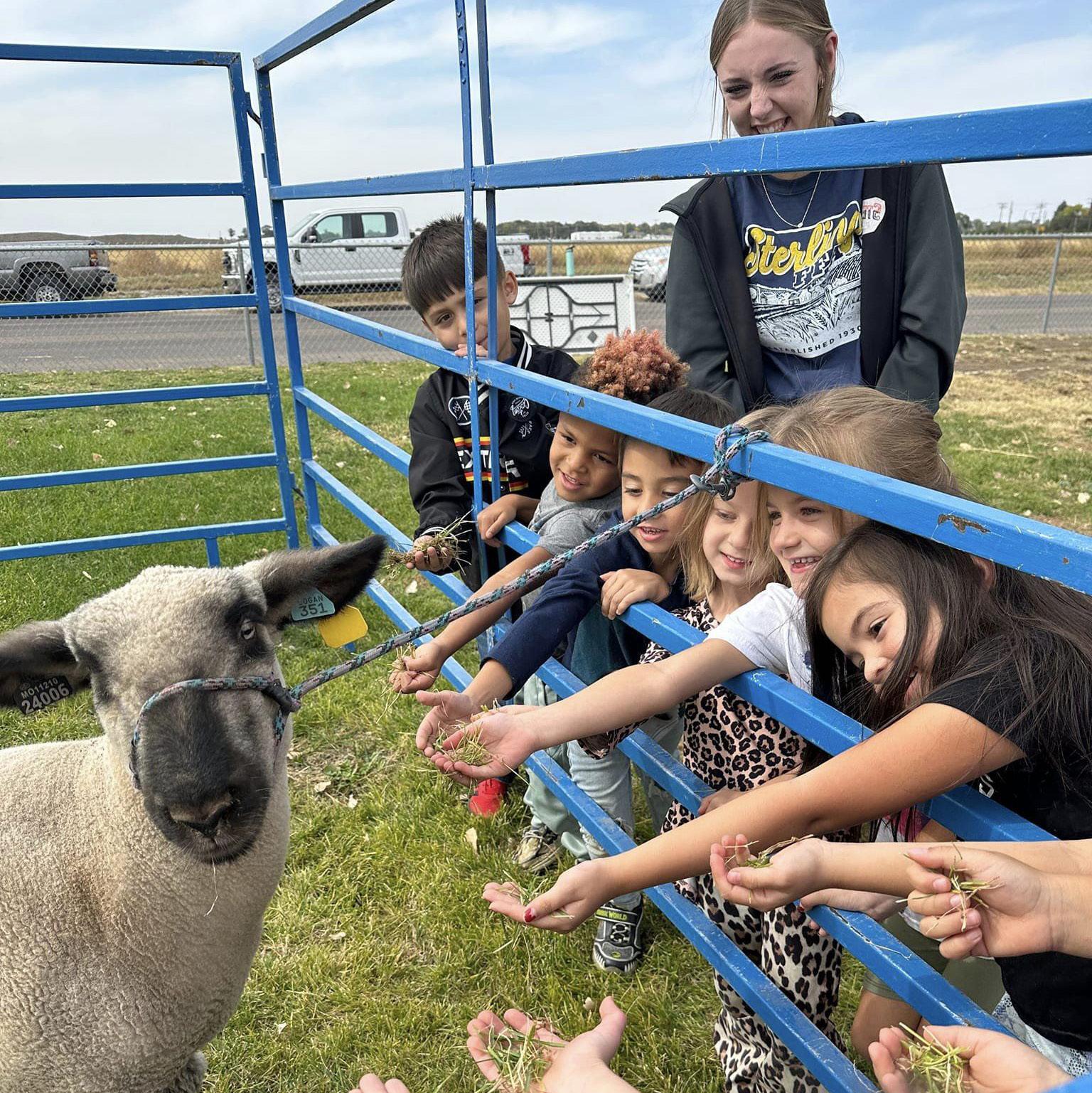

By Merino High School FFA
Seventeen members of the Merino FFA chapter proudly represented their school and community at the State FFA Convention in June. Among the highlights, five outstanding members — Skyla Gress, Jaxson Samber, Cooper Holman, Tyler Miller and Kaden Piel — received their State FFA Degrees, the highest honor a state can bestow
Additionally, Reb Heller, Jericho Carr, and Lyla Wernsman competed as our district-winning team in the FFA Quiz Bowl, earning a Silver placing for their efforts.
Earlier in the year, 17 freshmen
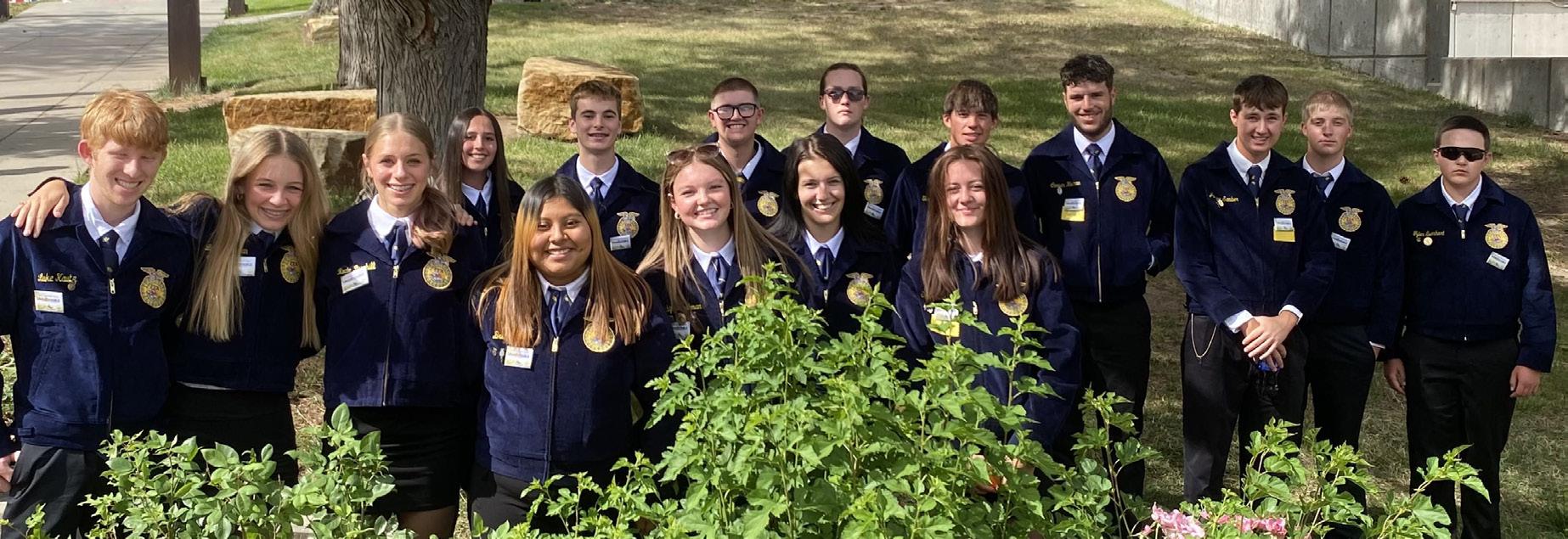
attended the BIG Conference to explore the many opportunities FFA has to offer. Those attending in-
cluded:
Wyatt Brown
Zara Connors
Kacey Erickson
leadership, community involvement, and the growth opportunities within FFA.

Syree Goss






Analeigh Hackbarth
Kaebrynn Heller
Liam Itule
Lexi Kanaar
Kaleb Knutson
Haylee Lambert
Lauren Lorenzo
Colton Morell
Riley Pope
Aislyn Samber
Bouxe Smith
Parker Spielmann
Preston Wirbs
These students learned about
Our chapter was also actively involved in the Merino Fall Festival, with several members representing Merino FFA by riding on the FFA float.
In another exciting achievement, 14 members of our range ecology class competed in the State Range CDE, securing second place overall in the Beginner Division. The team included:
Jericho Carr (Gold)
Zachary Mackintosh (Gold)
Ermel Gonzalez (Gold)
Ava Wirbs (Silver)


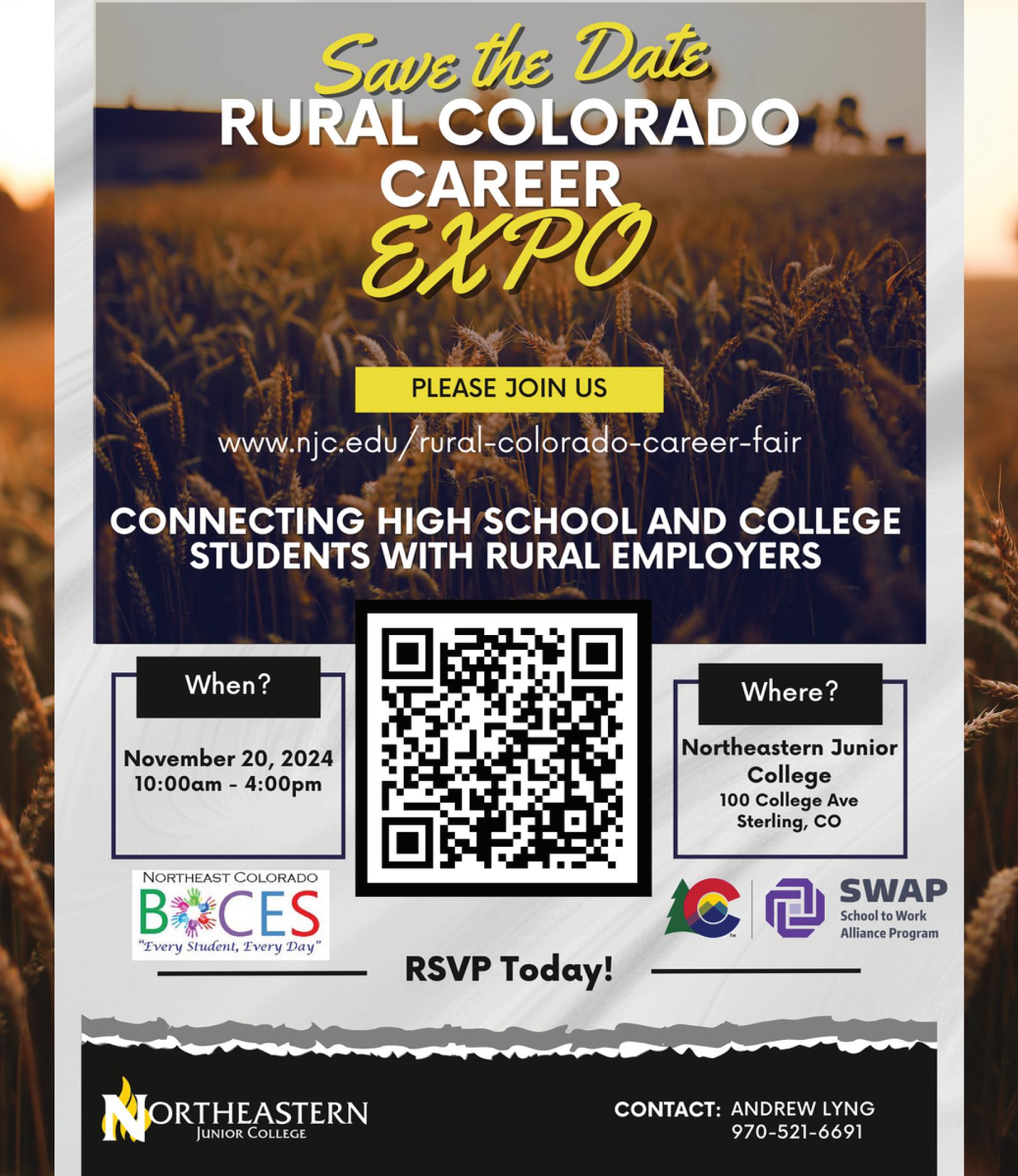
By Robin Northrup
The Fort Morgan Times
At the recent Investigate 4-H event held at the Morgan County Fairgrounds in Brush, 4-H member Elizabeth Whitney shared her story of wool processing and weaving
Whitney says that her mother raised sheep and began showing them when she was in 4-H. Now, in her journey with 4-H, it has become a project involving their entire family. Her father, Brian, mother, Janie, and two younger brothers, Jacob and Seth, all have a part in caring for the sheep.
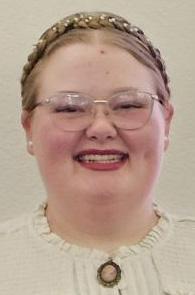
“It is a collective effort,” said Whitney. “Everyone pitches in to care for our six ewes and two rams.”
El iz ab et h’ s mother began experimenting with wool processing during COVID-19 in 2020. She began by spinning storebought fiber and eventually started using the wool from their own sheep.
Elizabeth said they were able to learn the process by reading books and articles and watching many YouTube tutorials
Elizabeth’s weaving skills have improved over the past three years
“I have gained an understanding
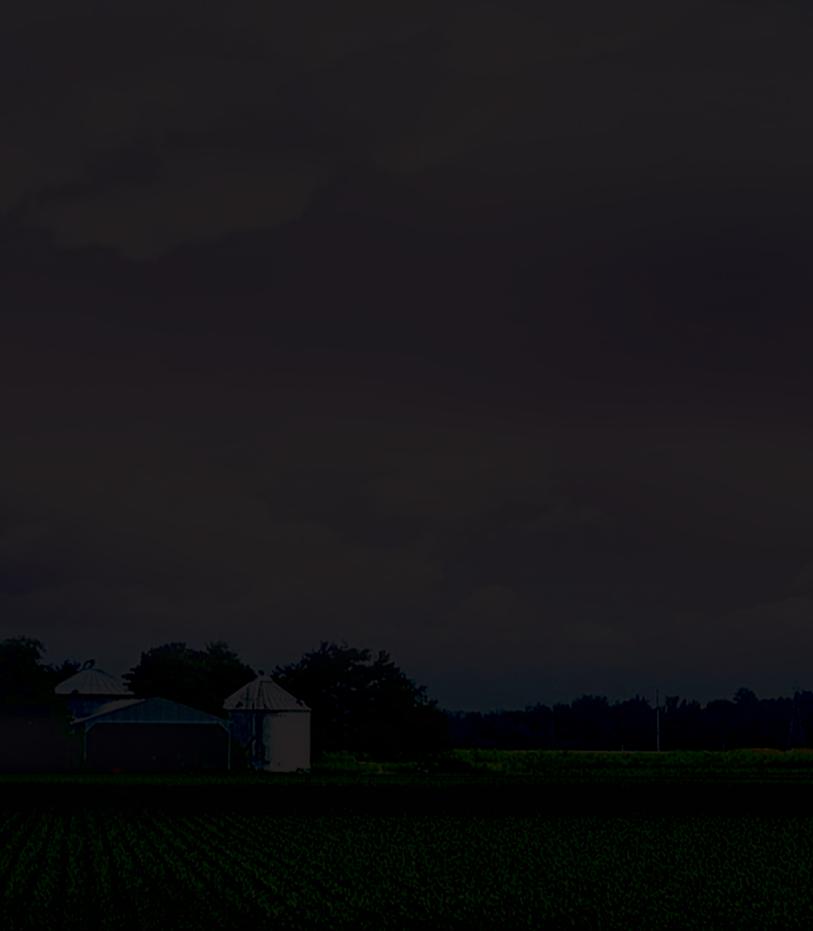
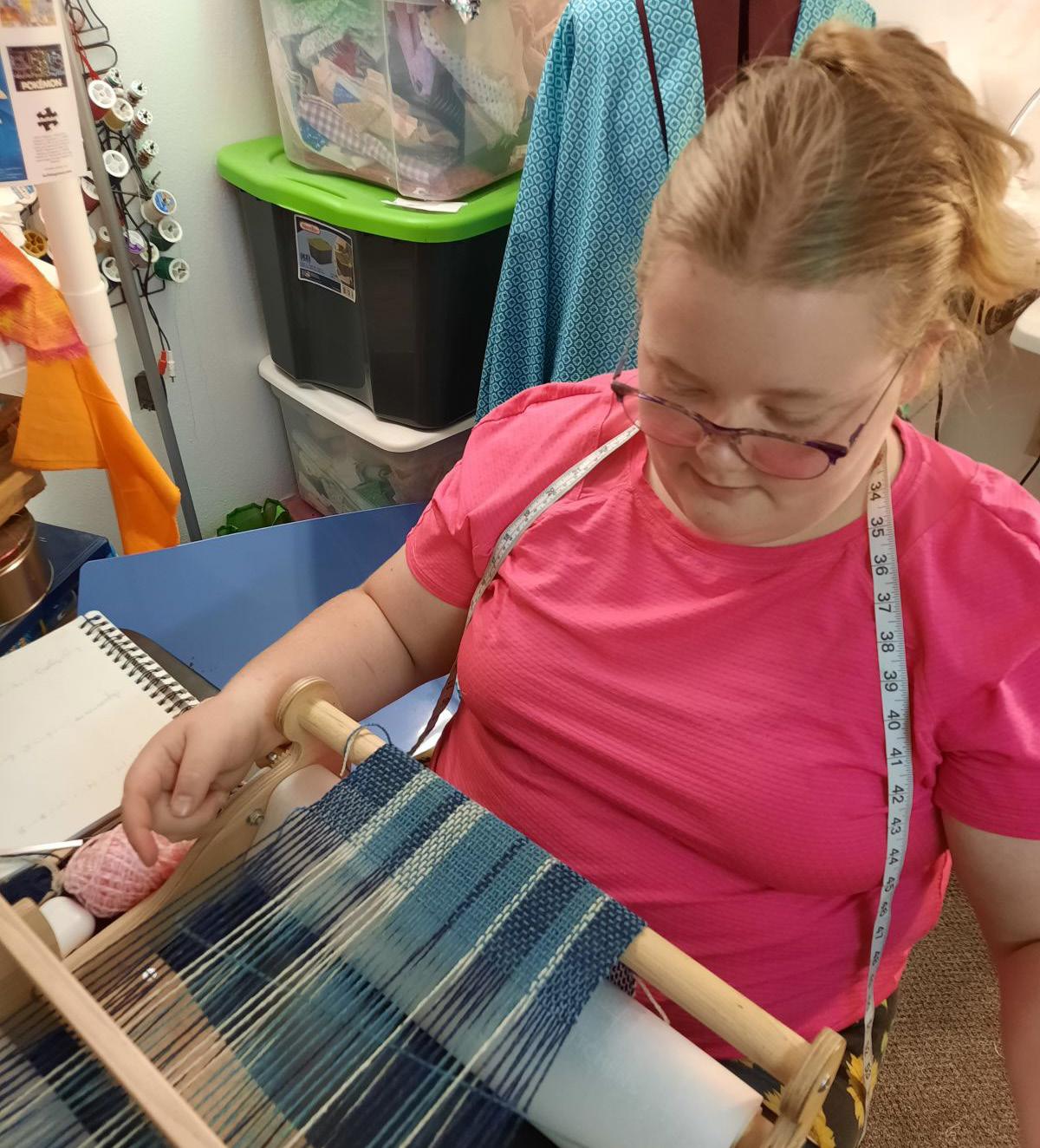



By Rhea Maze, Colorado State University
Growing up in southeastern Colorado, near an area among the hardest hit by the Dust Bowl of the 1930s, James Pritchett remembers hearing stories of “Black Sunday.”
On April 14, 1935, drought combined with over-plowed land culminated in one of largest dust storms of the era, one that blotted out the sun and swept through seven states. In Baca County, Colorado, alone, this dark chapter in agricultural history reduced its wheat production from 237,000 acres to only 150 acres of farmable land and forced over 40% of its residents to leave.
“Over decades, we’ve learned how to better take care of the land and to improve the soil so that we wouldn’t face this kind of ecological disaster again,” said Pritchett, dean of Colorado State University’s College of Agricultural Sciences. “But amidst climate change and other modern challenges, there is more urgency now for us to pay closer attention to ecological systems in the soil.”
Researchers in CSU’s Department of Soil and Crop Sciences are partnering with the new Saving Tomorrow’s Agricultural Resources (STAR) program to help Colorado farmers and ranchers improve their land for future generations. The Center for Science Communication is sharing the stories of their soil-

health journeys in a new film series called “Hold Our Ground.”
Colorado STAR launched in 2022 as a partnership between the Colorado Department of Agriculture, CSU, the Natural Resources Conservation Service, and other partners. The program aims to incentivize the adoption of healthy soil management practices.
Professor Emeritus Jim Ippolito and Research Scientist Megan Machmuller are part of the CSU research team collaborating with STAR. Their work includes installing soil moisture sensors, test-
ing soil and water quality, and using cutting-edge tools to monitor greenhouse gas emissions and soil carbon sequestration The program is also collecting data on management techniques, yields, inputs and other economic and social factors.
“It is so exciting to see the willingness of Colorado farmers and ranchers to work together with all these different people and to see everyone coming to the table to find common ground,” Ippolito said. “We’ve caught the soil health wave and there’s so much energy behind it by so many different entities —
we are all working together to get things done.”
For the CSU team, working directly with Colorado farmers and ranchers has been a rewarding co-learning experience “They truly care,” Machmuller said. “And many of them are already doing very innovative and exciting things for soil health.”
Access to advanced analytical tools in metagenomics and metabolomics, which look at what microorganisms are in the soil and how they function, sharpen the STAR








FROM PAGE 24
research team’s ability to detect soil changes and enhance their understanding of soil health. But their work goes beyond high-tech metrics “Our research is really taking a holistic approach,” Machmuller said “We are trying to understand the ecological, economic and social benefits of soil health practices.”
To complement the science, the “Hold Our Ground” film series seeks to engage both agricultural producers and the public in the importance of soil health through visual storytelling. “Soil health is integral to CSU’s land-grant mission,” said Ippolito. “And we have the world-class scientists needed to lead this effort, as well as the communicators who can tell the story.”
The “Hold Our Ground” film series highlights the soil-enhancing, relationship-building work taking place with STAR farmers and ranchers across the state.
“This program took so much time, energy, effort, research and listening sessions to understand all
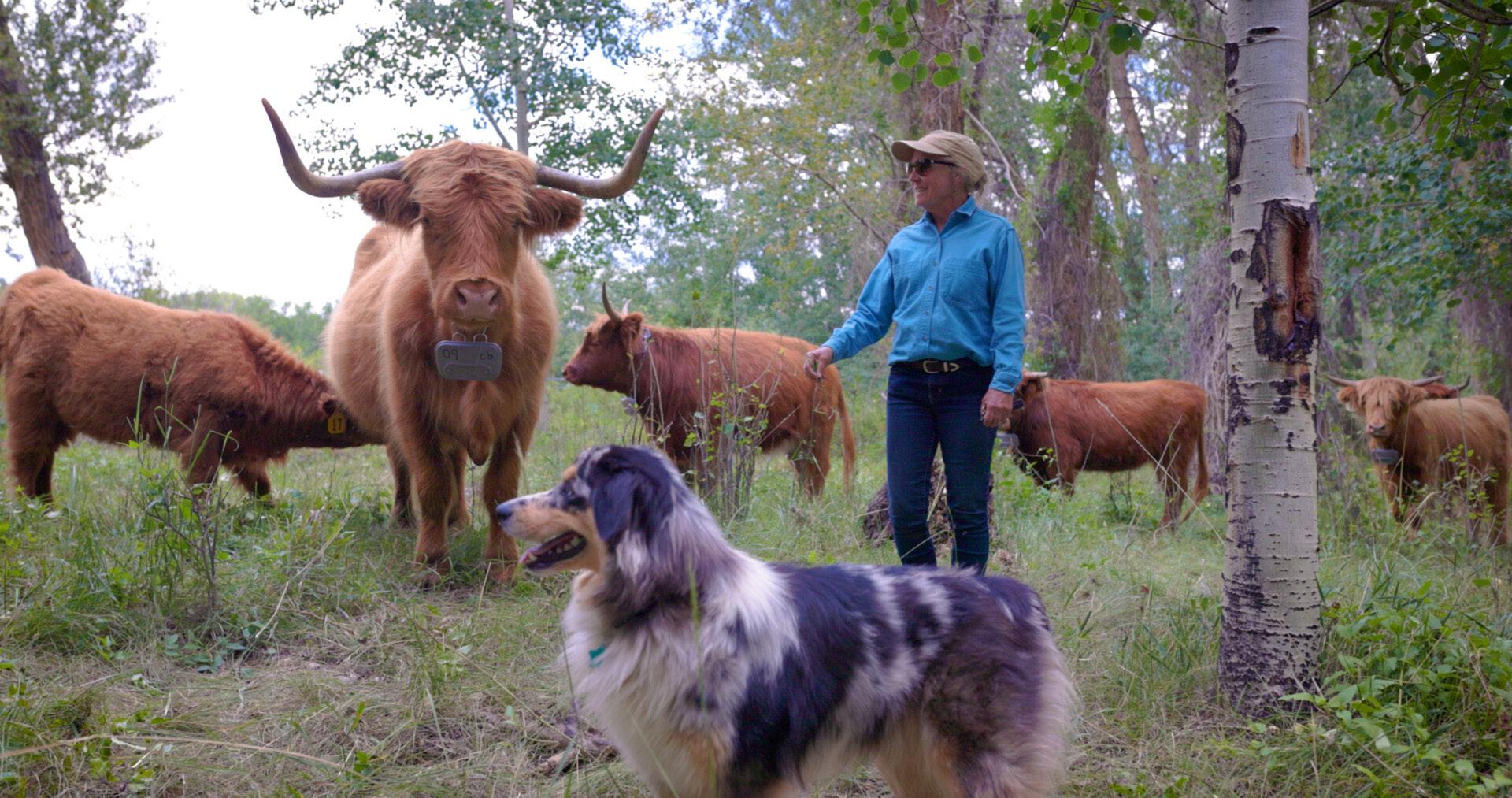
of the challenges, barriers, opportunities and what the farmers and ranchers here in Colorado need,” Machmuller said. “Those critical conversations brought everyone to
the table and it is so exciting to be off and running. The most meaningful science is done this way it is all about relationships.”
The Center for Science Com-
munication’s film crew traveled all around Colorado to connect with the people behind the food. Through documenting their ideas
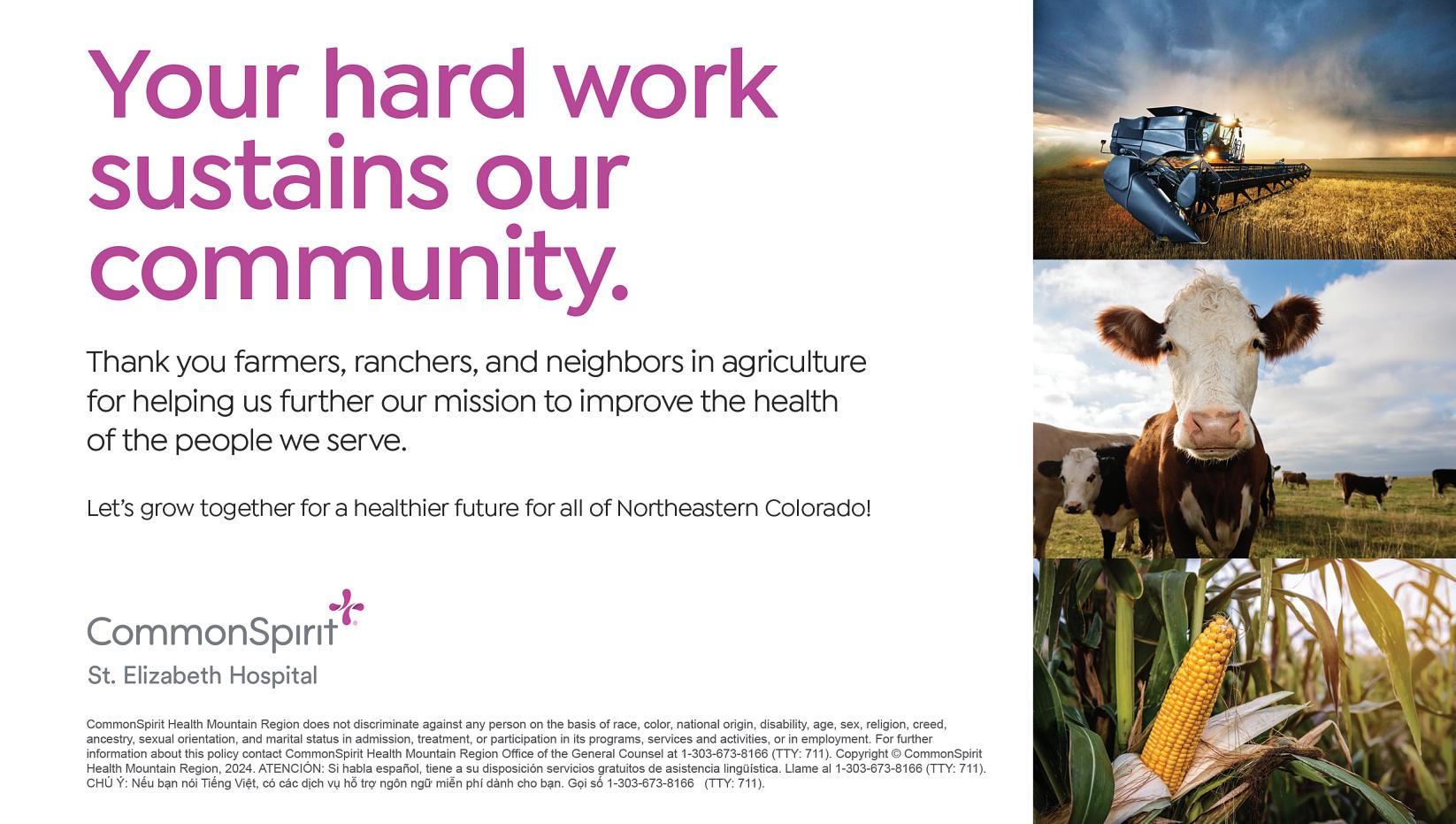
FROM PAGE 25
and progressive soil health practices, the series aims to further the soil health movement.
“As a powerful visual medium, we hope that these films will help Colorado producers visualize the potential of incorpo-
rating new soil health practices into their own operations,” said the series’ producer and director, Jaime Jacobsen, an assistant professor in the Department of Journalism and Media Communication and director of the Center for Science Communication. “We believe these films can play a key role in demonstrating conservation practices and sharing that knowledge.”
FROM PAGE 22
of the craft and the value of handmade items,” she said. “I am still learning, but my passion for weaving has grown so much that I seriously consider turning my hobby into a business.”
Whitney used her skills to process wool to weave a skirt, and the project earned several awards in 4-H competitions She won both Champion and Reserve Grand Champion titles at the Fashion Revue.
At the Morgan County Fair, she
received a Blue Award for completing her record book and Best Records for having the top Heritage Arts record book with Champion and Grand Champion titles.
At the Colorado State Fair, she was named Heritage Arts Fiber Arts Senior Class Champion and brought home the Heritage Arts Fiber Arts Overall Grand Champion.
Elizabeth plans to attend college after graduating and work towards her Associate of Arts degree. She says she’s excited about her weaving journey and is ready to explore new opportunities and master techniques to make her work even more interesting.

FROM PAGE 20
Noah Shelton (Silver)
Payten Spilemann (Silver)
Kaitlynn Miller (Bronze)
Taylor Hutt (Bronze)
Tyler Everhart (Bronze)
Makya Goeglein (Bronze)
Luke Kautz
Analise Baray
Brayden Williams
Landon Ryles
Congratulations to all our members for their hard work and achievements!


